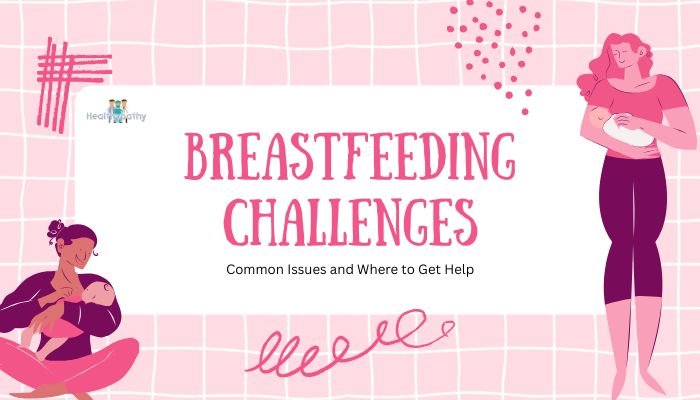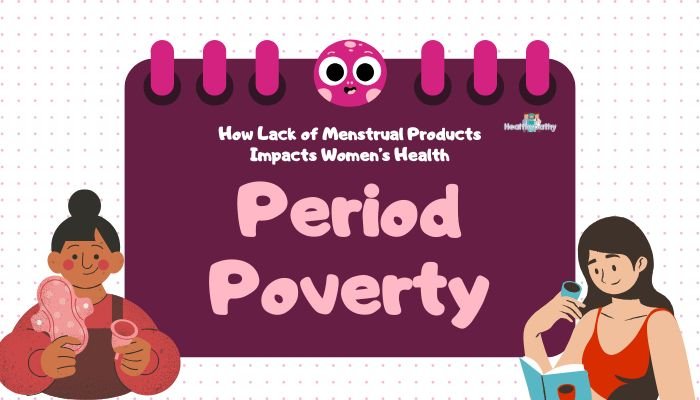Introduction
Breastfeeding can be an intimate bonding experience and a source of vital nutrition for newborns. Many women hope to breastfeed soon after giving birth, yet the early weeks can be difficult. Common issues include nipple pain, low milk supply, and concerns about the baby’s latch. Some women also wonder if their baby is getting enough milk or if they should supplement. These problems often improve with time, support, and proper guidance from healthcare providers, lactation professionals, and peer networks.
The benefits of breastfeeding include a reduced risk of infections for infants, healthy growth, and emotional closeness. Mothers may also benefit from fewer postpartum complications and a quicker return to pre-pregnancy health. Although breastfeeding is natural, the learning curve can feel steep. This article outlines common breastfeeding challenges, their possible causes, and practical tips to address them. It also provides information on community and professional resources for women seeking specialized assistance.
Importance of Early Breastfeeding Support
Early experiences with breastfeeding can shape a mother’s confidence and overall feeding success. Some healthcare facilities encourage immediate skin-to-skin contact and breastfeeding within the first hour of birth. Such practices help stimulate milk production and enhance the baby’s instinct to latch. When problems arise, prompt support often prevents minor challenges from becoming long-term struggles.
Benefits of Early Support
- Prevention of Painful Latch: Correct positioning lowers the risk of nipple damage or soreness.
- Improved Milk Flow: Consistent nursing sessions signal the body to produce the correct milk volume.
- Reduced Infant Jaundice: Frequent breastfeeding helps babies pass bilirubin more quickly, limiting jaundice.
- Enhanced Mother-Baby Bond: Skin-to-skin contact nurtures closeness and encourages babies to root for the breast.
Many hospitals and birth centers employ lactation consultants or postpartum nurses trained in breastfeeding. These specialists can observe feeding sessions, correct latch problems, and answer questions about positioning or pumping. If ongoing assistance is needed after discharge, scheduling a consultation or attending a breastfeeding support group can provide reassurance and problem-solving strategies.
Common Breastfeeding Challenges
Improper Latch and Nipple Pain
A poor latch is a frequent source of nipple pain. Babies may latch onto the tip of the nipple rather than taking in a significant portion of the areola. This shallow latch can result in cracked or bleeding nipples, making each feeding session painful.
Signs of a Shallow Latch:
- Only the nipple tip is in the baby’s mouth.
- The baby’s mouth is not opened wide, or lips are not flanged outward.
- Clicking sounds, indicating the baby is losing suction.
- Ongoing maternal pain after the baby begins feeding.
Possible Solutions:
- Positioning: Adjust how the baby approaches the breast. Use techniques like the cross-cradle, football hold, or side-lying position to find comfort.
- Nipple Shield (Short Term): A thin silicone shield can protect nipples while the latch improves. Consult a lactation professional to ensure correct use.
- Breaking the Latch Gently: If pain is intense, insert a clean finger in the corner of the baby’s mouth to release suction and re-latch more deeply.
As the latch improves, nipple pain usually decreases within a few days. If severe pain or nipple trauma persists, seeking in-person assistance from a lactation consultant is advisable.
Engorgement
Engorgement often appears in the first few days or weeks, when milk “comes in” and the body has not yet learned how much milk the baby needs. The breasts can become very full, hard, and tender. This can make it harder for the baby to latch because the areola is swollen.
Tips to Relieve Engorgement:
- Frequent Nursing: Encourage the baby to breastfeed on demand, usually every 2–3 hours, which helps regulate supply.
- Gentle Massage: Softly massage the breast tissue toward the nipple before feeding to ease let-down.
- Warm Compress or Shower: Heat can soften the breast and ease milk flow. Follow up with cool packs after feeding to reduce swelling.
- Hand Expression or Pumping (Briefly): Expressing a small amount of milk can soften the areola and help the baby latch. Over-pumping to relieve engorgement, however, might increase milk production further.
Engorgement usually subsides as milk supply adapts to the baby’s needs. Persistent swelling or fever might signal a breast infection or blocked duct requiring prompt medical care.
Low Milk Supply
Some mothers worry they lack enough milk to satisfy their baby. True low supply can happen, yet it is less common than perceived. Newborns feed frequently—sometimes every 1–2 hours—making mothers feel their supply is inadequate. In most cases, consistent breastfeeding and effective removal of milk trigger ongoing production.
Possible Causes of Low Supply:
- Ineffective latch, causing the baby to remove only small amounts of milk.
- Infrequent feeding or use of long stretches between feeds.
- Underlying hormonal conditions, such as thyroid problems.
- Maternal dehydration, stress, or postpartum complications.
Strategies for Building Supply:
- Frequent and Effective Breast Emptying: The more often milk is removed, the more the body responds.
- Skin-to-Skin Contact: Encourages the baby’s natural rooting and stimulates milk production hormones.
- Power Pumping: Using a breast pump in short cycles (e.g., pump 10 minutes, rest 10 minutes, then pump again) can mimic cluster feeding and boost supply.
- Hydration and Balanced Diet: Lack of fluids or key nutrients may reduce milk output.
If concerns about supply persist or the baby is not gaining weight, a lactation specialist can perform weighted feedings or observe the feeding process to pinpoint issues.
Oversupply and Fast Let-Down
While low supply worries some mothers, others produce too much milk or have a forceful let-down reflex. Babies may cough, choke, or pull away from the breast if the flow is too strong. This can cause frustration for both mother and child.
Suggestions for Oversupply Management:
- Block Feeding: Nursing from one breast for multiple consecutive feedings can signal the body to make less milk.
- Positioning Adjustments: Feed in a slightly reclined position so gravity slows the flow. The baby can control swallowing better.
- Hand Express or Pump Only to Comfort: Removing a small amount of milk before a feed can reduce the initial pressure.
A balanced supply may take time to achieve. Babies adjust by learning to handle the flow, and the mother’s production often stabilizes within a few weeks.
Blocked Ducts and Mastitis
Blocked milk ducts occur when milk flow is restricted, leading to tender lumps in the breast. If the blockage persists, inflammation and infection (mastitis) can develop. Mastitis symptoms may include redness, warmth, fever, or body aches.
Prevention and Treatment:
- Frequent Emptying: Keep milk moving through regular nursing or pumping.
- Varied Feeding Positions: Different angles help the baby drain all areas of the breast.
- Warm Compresses and Gentle Massage: Encourage milk flow around the blockage.
- Medical Care: If fever or flu-like symptoms arise, a doctor may prescribe antibiotics for mastitis. Continuing breastfeeding is generally recommended.
Blocked ducts typically clear with home remedies, though prompt attention is necessary to prevent progression to mastitis or abscess formation.
Thrush (Yeast Infection)
Thrush is a yeast overgrowth that can occur in a baby’s mouth or on a mother’s nipples. Babies might have white patches on the tongue or inner cheeks, and mothers can experience nipple pain, burning, or itching. This infection can pass back and forth if not treated thoroughly.
Treatment Approach:
- Antifungal Medications: Pediatricians may prescribe an oral antifungal for the baby. Mothers might need antifungal creams or solutions for the nipples.
- Sterilizing Pump Parts and Bottles: Boiling pump parts can reduce re-infection risk.
- Breast and Nipple Hygiene: Frequent pad changes and proper bra washing help prevent moisture buildup.
Thrush may take time to resolve fully, and consistent medical follow-up helps ensure complete clearance.
Nipple Confusion or Preference
When babies transition between breastfeeding and bottles, they might develop a preference for one feeding method if the flow is significantly different. Some babies reject the breast after an early introduction of bottles or pacifiers.
Minimizing Confusion:
- Wait Before Using Bottles: If possible, establish breastfeeding for a few weeks before introducing bottles.
- Use Slow-Flow Nipples: Mimic the breast’s flow to reduce the baby’s frustration or preference for faster bottle feeding.
- Paced Bottle Feeding: Pause frequently and keep the bottle at a horizontal angle to let the baby control milk intake, similar to breastfeeding rhythms.
Should a baby strongly reject breastfeeding, working with a lactation consultant can help reinstate the breast. Skin-to-skin time, supplemental nursing systems, or changing feeding positions might encourage a return to nursing.
Emotional Challenges and Breastfeeding
Breastfeeding can be emotionally demanding. Mothers often feel stressed or guilty if they cannot produce enough milk or if the baby struggles with feeding. The postpartum period includes hormonal shifts, which can amplify feelings of self-doubt or anxiety.
Managing Stress and Self-Care
- Accepting Help: Partners, family, or friends can handle household tasks while the mother focuses on feeding.
- Joining Support Groups: Local or online breastfeeding communities allow mothers to share advice and encouragement.
- Mindful Breathing: Deep breathing or short relaxation techniques before breastfeeding can calm nerves.
- Professional Counseling: If breastfeeding challenges contribute to postpartum depression or anxiety, a mental health professional can guide coping strategies.
A well-supported mother is more likely to persist through breastfeeding challenges. A network of trusted helpers and understanding professionals can make a significant difference.
Combining Breastfeeding with Pumping or Supplementation
Some women introduce pumping early to build a stored supply for returning to work or to allow others to feed the baby. Others may supplement with formula if supply concerns or personal preferences arise. Though exclusive breastfeeding has many advantages, combining methods can be a valid choice.
Pumping Basics
- Choosing a Pump: Double electric pumps often suit mothers returning to work, while manual pumps can help with occasional use.
- Pumping Frequency: Pumping at regular intervals aligns with feeding times to maintain milk production.
- Storage Guidelines: Freshly pumped milk stays safe at room temperature for about four hours, in a refrigerator for up to four days, and in a freezer for 6–12 months, depending on the freezer type.
Introducing Formula
- Assessing the Reason: If the baby is not gaining weight or the mother’s supply is low, partial formula supplementation may help.
- Choosing Bottles: A slow-flow nipple can reduce the baby’s preference for bottle over breast.
- Maintaining Supply: The mother can pump around the same time the baby receives formula to preserve her milk production.
Breastfeeding and formula can coexist, but frequent monitoring of the baby’s weight and hydration is important to ensure a balanced feeding plan.
Tips for Overcoming Common Hurdles
While breastfeeding can feel overwhelming, small steps often yield improvement over time. Mothers benefit from patience, practice, and guidance from experienced caregivers.
Positioning and Latch
- Supportive Pillows: Use nursing pillows or rolled towels to raise the baby to breast level.
- Align the Baby’s Nose to the Nipple: This orientation prompts the baby to tilt the head back and open the mouth widely for a deeper latch.
- Bringing the Baby to the Breast (Not the Other Way Around): Keep your back straight and shoulders relaxed. Pull the baby in, rather than leaning forward.
Tracking Output
Newborns typically have a certain number of wet and dirty diapers daily. This can reassure mothers that their baby receives enough breastmilk. As a baby grows, weight checks at pediatric visits confirm consistent gains.
Nighttime Feeds
Night feeding is normal and helps sustain milk supply, as prolactin levels are higher during nighttime hours. Many families opt to keep the baby nearby in a bassinet or practice safe bed-sharing. Minimizing nighttime disruptions by feeding in low-light conditions can help the mother return to sleep more easily.
Professional and Community Resources
Breastfeeding assistance is widely available through various channels. Women facing persistent challenges can find help from:
Lactation Consultants (IBCLC)
International Board Certified Lactation Consultants undergo specialized training to address a broad range of breastfeeding issues. They provide in-person or telehealth sessions, performing feeding assessments and offering personalized solutions.
Hospital or Birth Center Clinics
Many hospitals feature breastfeeding clinics staffed by nurses or lactation consultants. Mothers can schedule follow-up visits after discharge to ensure progress.
La Leche League
La Leche League International offers group meetings, phone hotlines, and online forums dedicated to breastfeeding education and mother-to-mother support. Volunteers often have extensive personal breastfeeding experience and peer counselor training.
WIC (Women, Infants, and Children) Program
In some countries, the WIC program supports low-income mothers with supplemental nutrition, breastfeeding counseling, and breast pump loans or subsidies. Local WIC offices often partner with lactation experts and community networks.
Peer Support Groups
In-person community meetings or online groups allow mothers to ask questions, share tips, and connect with others who have faced similar hurdles. Peer gatherings can provide emotional encouragement and practical solutions.
When to Seek Medical Evaluation
Some breastfeeding problems go beyond typical obstacles and require closer attention from a pediatrician or obstetrician:
- Baby’s Weight Gain or Output: If the baby is not regaining birth weight by two weeks or is not producing enough wet diapers, an urgent feeding evaluation is necessary.
- Severe Nipple Damage: Deep cracks, bleeding, or persistent open wounds can lead to infection.
- Suspected Tongue-Tie or Lip-Tie: A structural issue might limit the baby’s ability to latch and remove milk well.
- Recurrent Thrush Infections or Mastitis: If infections keep reappearing, underlying factors should be assessed.
- Maternal Health Concerns: Prolonged postpartum bleeding, fever, or severe depression may compromise the mother’s ability to breastfeed and should prompt medical evaluation.
Doctors or specialists can coordinate an investigation of structural, hormonal, or infectious sources of feeding issues. Timely intervention often restores comfort and effective feeding.
Conclusion
Breastfeeding brings physical and emotional rewards, but many women encounter barriers early on. Low supply worries, painful latch, engorgement, and infections such as mastitis can all complicate nursing. Emotional challenges like anxiety or guilt may add pressure to an already demanding period of change. Yet with the right approach, most breastfeeding issues can be managed or resolved.
Practical techniques include ensuring a deep latch, rotating feeding positions, or seeking help to fix latch problems. Skin-to-skin contact, frequent feeds, and good hydration boost milk supply, while tools such as nipple shields or pumping can fill short-term gaps. Emotional well-being matters, too. Support from partners, professionals, and community groups helps mothers stay confident through difficulties.
Breastfeeding is a journey that evolves over weeks or months. Each mother and baby learn at a unique pace, with frequent adjustments to technique and schedule. By combining perseverance, knowledge, and personalized support, many women find that initial roadblocks give way to a fulfilling nursing experience that benefits both mother and child.
References
- Hobbs AJ, Mannion CA, McDonald SW, Brockway M, Tough SC. The impact of skin-to-skin contact and breastfeeding self-efficacy on exclusive breastfeeding. J Hum Lact. 2016;32(3):525–533.
- Giugliani ER. Common problems during lactation and their management. J Pediatr (Rio J). 2004;80(5 Suppl):S147–S154.
- Lawrence RA, Lawrence RM. Breastfeeding: A Guide for the Medical Profession. 8th ed. Elsevier; 2015.
- Wilson-Clay B, Hoover K. The Breastfeeding Atlas. 6th ed. LactNews Press; 2017.
- DiGirolamo AM, Thompson N, Martorell R, Fein S, Grummer-Strawn L. Intention or experience? Predictors of continued breastfeeding. Health Educ Behav. 2005;32(2):208–226.
- Kent JC, Ashton E, Hardwick CM, et al. Nipple pain in breastfeeding mothers: Incidence, causes and treatments. Int J Environ Res Public Health. 2015;12(10):12247–12263.
- Chantry CJ, Eglash A, Labbok M. ABM position on breastfeeding—revised 2015. Breastfeed Med. 2015;10(9):407–411.
- Guise JM, Palda V, Westhoff C, et al. The effectiveness of primary care-based interventions to promote breastfeeding. Ann Fam Med. 2003;1(2):70–78.
- Berens PD, Eglash A, Malloy M, Steube AM, Academy of Breastfeeding Medicine. ABM clinical protocol #26: Persistent pain with breastfeeding. Breastfeed Med. 2016;11(2):46–53.
- Amir LH, Donath SM. Socioeconomic status and rates of breastfeeding in Australia: Evidence from three recent national health surveys. Med J Aust. 2008;189(5):254–256.
Meek JY, Noble L, Section on Breastfeeding. Policy statement: Breastfeeding and the use of human milk. Pediatrics. 2022;150(1):e2022057988. - Centers for Disease Control and Prevention. Breastfeeding support: Top 5 ways WIC supports breastfeeding moms. CDC; 2021.







